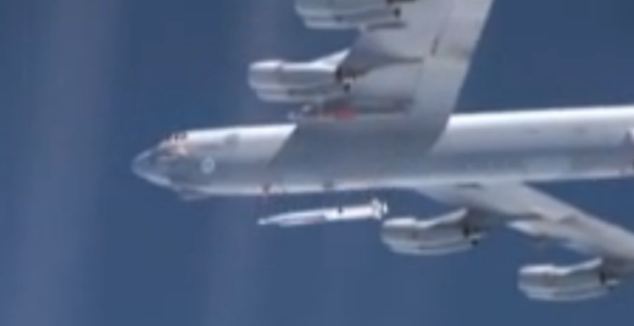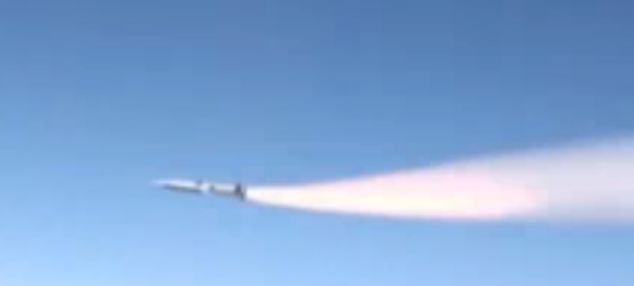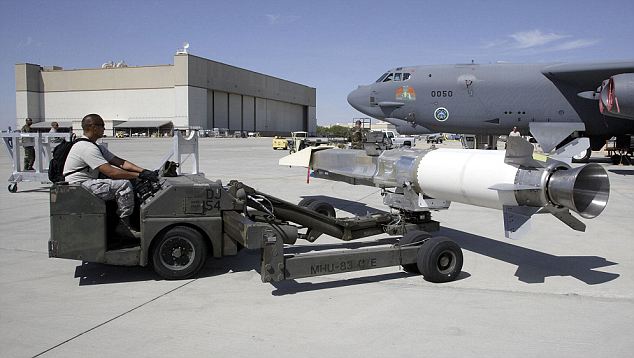Arcing through the hazy air above California, this is the incredible sight of a scramjet as it flies at six times the speed of sound.
The experimental aircraft set a record for hypersonic flight, blazing through the air for more than three minutes at Mach 6, or more than 4,500 mph.
The X-51A Waverider scramjet was released from a B-52 bomber last week before its engine took it to Mach 6 and it flew autonomously for 200 seconds.
Scramjets work by using oxygen rushing in through the engine at supersonic speeds to ignite hydrogen fuel.

The X-51 Waverider is released form the B52 before it streaks away to hit speeds in excess of 4,500mph
In a conventional jet engine, spinning blades suck air into the engine and compress it for combustion.
The next step up is the ramjet engine, powered by fuel burning after subsonic air is forced into the engine by the speed of the aircraft.
But in scramjets, so-called because they are ‘supersonic combustion ramjets’, airflow throughout the engine remains supersonic – using the oxygen in the incoming air to ignite hydrogen fuel.
The expanding hot gases from combustion accelerate the exhaust air to create tremendous thrust.
The engines could slash satellite launch costs, because there is no need for liquid oxygen as fuel.
The U.S. space shuttle has to carry more than a million pounds of liquid oxygen each time it lifts off.

The experimental scramjet travelled at Mach 6 for almost three minutes

The scramjet is loaded onto a B-52 at Edwards Air Force Base
The U.S Air Force said the previous record for a hypersonic scramjet burn was 12 seconds.
‘We are ecstatic to have accomplished many of the X-51A test points during its first hypersonic mission,’ said Charlie Brink, an X-51A program manager with the Air Force Research Laboratory.
‘We equate this leap in engine technology as equivalent to the post-World War II jump from propeller-driven aircraft to jet engines,’ Mr Brink said.
A passenger plane traveling at Mach 6 would cut the flight time from London to Sydney to little more than two hours.
Dr Andrew Coates, of the Mullard Space Science Lab at University College London, said the effects for passengers aboard a scramjet-powered plane would be ‘more akin to space travel than airline travel’.
They would need protective clothing to counteract the effects of the G-forces pressing on the body during acceleration to 5,000mph.
British scientists have worked on designs for scramjets but do not expect one to be available for commercial flights until at least 2020.
RELATED ARTICLES
- Mark Zuckerberg is Stockpiling on Gold Reserves, Preparing to Move to Bunker
- Doctors Sue Governor Gavin Newsom of California Over COVID 'Misinformation' Law
- LA Health Officials Say Maskless Emmy's Did NOT Violate Rules Because 'Hollywood Elite Are Protected & Special'
- California BANS 'In-Home Bible Studies' after Banning Church Singing, are these the End Times?
- Stanford study: COVID-19 much more widespread than thought, and NO MORE DEADLY THAN FLU











